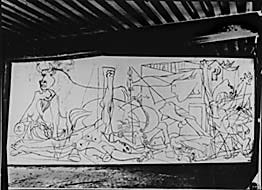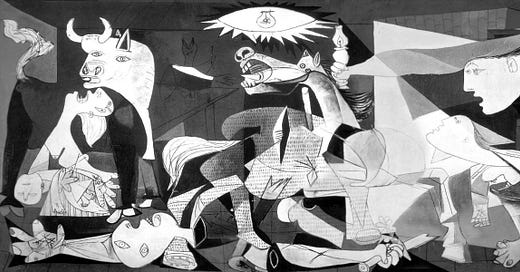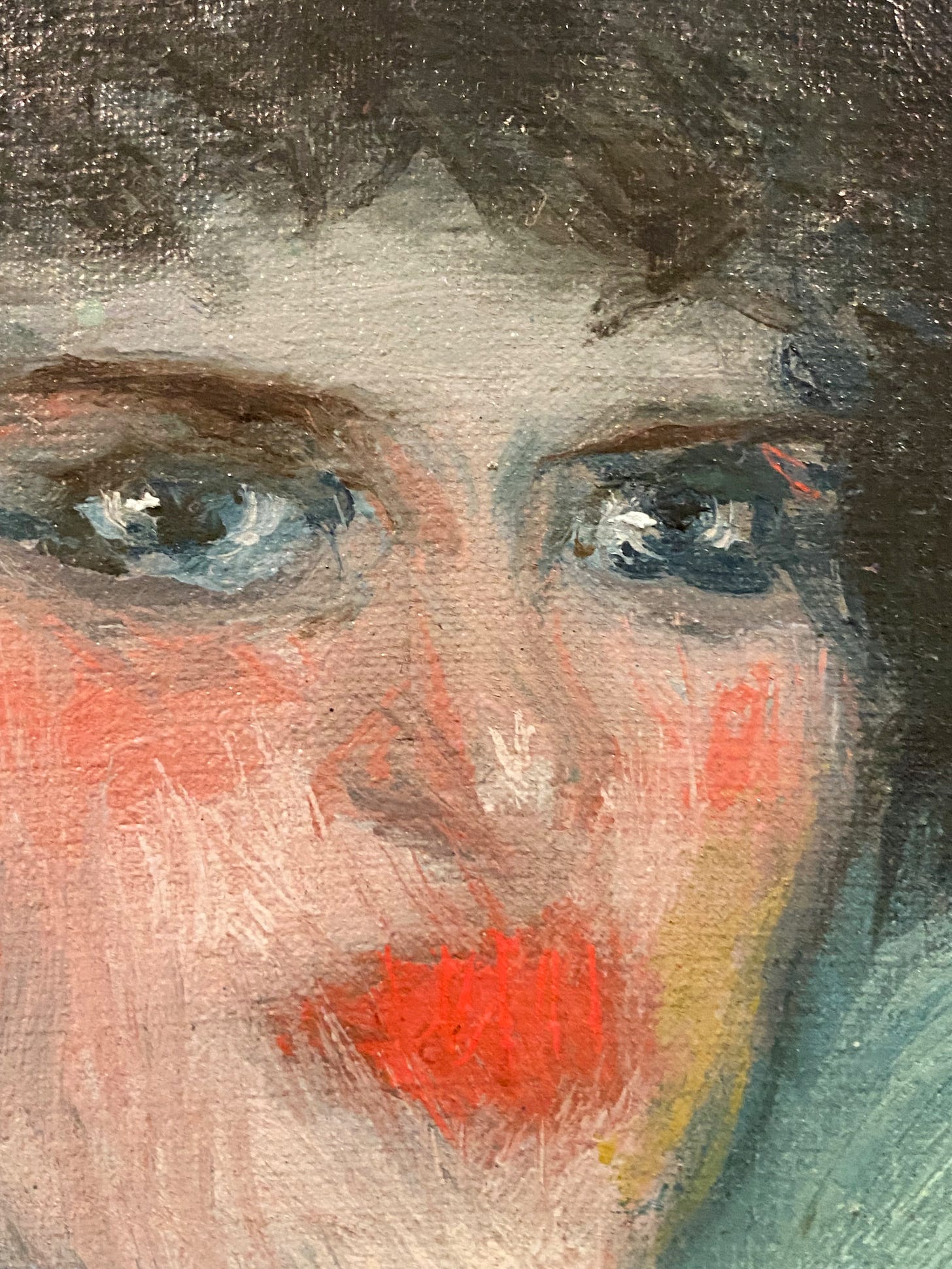How to realise your Vision
What we can learn on realising our visions from Picasso's masterpieces Guernica (1937) and Woman in Blue (1901).
Story of a painting (part 1)
This week I visited the wonderful city of Madrid. Whilst the weather in Spain has been scorching and almost deprived of rain since May, the weather gods -in their climate change affected wisdom - decided to drench the Spanish capital in rain this weekend. So much, in fact, that parts of the region flooded, causing many problems for people not used to dealing with so much water in such a short period of time.
An upside of this, was that I visited some of Madrid’s wonderful museums. The beautiful Prado Museum, of course, and also the Reina Sofia Museum just around the corner from there.
The latter museum was specifically on my list since my recent visit to the Spanish Basque Country, including the city of Gernika (Guernica), scene of the disastrous Nazi bombing on the 26th of April 1937.
That bombing inspired the painter Pablo Picasso to paint what many people consider to be one of the most moving and powerful anti-war paintings in history: his Guernica (1937).
Indeed, it is quite something to see this huge mural on display in room 205.10, where it occupies one wall. It is 3.49 m tall and measures 7.76m across, and it’s hugely impressive. In Picasso’s cubist style, it captures massive amounts of imagery and hidden messages, for sure.
Picasso expressed his Vision is various ways. I cannot remotely pretend to be an art critic, nor is this an article about art as such, so I am relying on information from the site pablopicasso.org for more detailed information. From this, we can draw some learning on realising our own Visions.
First, Picasso allowed a photographer to chronicle its progress. And, indeed, in room 205.10 of the Museo Reina Sofia, you can see the progress of the painting in 7 steps or so on the photos displayed on the opposite wall of the main painting. According to pablopicasso.org, “historians believe that the resulting black and white photos inspired the artist to revise his earlier coloured versions of the artwork to a starker, more impactful palette.”

This teaches us a few of potential lessons for realising our own Visions.
LESSON 1 - When working towards your Vision, review your intermediate steps to assess whether you are still on the right track to achieve the Vision and adjust accordingly.
LESSON 2 - Also engage another viewpoint than just your own to monitor the progress towards your Vision
LESSON 3 - Don’t be afraid to make bold choices when adjusting your journey to achieve your Vision. What you originally set out to do, may not have the impact you expected on the outset.
Another interesting feature in the same room 205.10, is that you can see some studies that the great painter did, before committing it on his eventual canvas.
You can clearly see how Picasso is creating the eventual composition of the various key elements in his painting. But, it’s also clear that is this not at all how it eventually ends up on in the final version.
LESSON 4 - When working towards your Vision, set time and effort aside to get the key elements of your Vision well designed before committing them as part of your end state. Trial and error is an important part of getting it right.
Another interesting element is that Picasso, in order to express the starkness of the aftermath of the bombing, specially ordered house paint that had a minimum amount of gloss. Thus, the grey, white and blue/black shades with the express matte finish created the tone that is now so much admired about this painting.
LESSON 5 - When realising your Vision, don’t shy away to look for ways-of-working or materials and tools that are unconventional. Perhaps that is required to make your Vision stand out and/or last?
Story of a painting (part 2)
Picasso’s Guernica was not the only painting, of course, that I saw that day.
Amidst Picasso’s earlier work is the less well known (and originally perhaps forgotten, after Picasso rushed back to his beloved Paris) painting Woman in Blue. In Madrid in the early 20th century, Picasso drew a series of courtesan portraits and this is one of them.
I like this painting.
The nameless woman sits their proud and stern. Viewed from a couple of meters or more away, her face shows all what you expect from a woman in her position. Who knows, her clients could well be royalty and may have betrayed their innermost secrets to her? The picture encourages the viewer to speculate about what she knows and what triggers her pride. That’s what I like about this picture.
But, let’s zoom in, onto her face that seems so expressive from a distance.
I think it is astonishing how these relatively rough brushstrokes, as seen like this from nearby, can achieve such stunning effect when seen from further away. Of course, it is an expression of Picasso’s genius, but there is also something we can learn from this for our own Vision.
LESSON 6 - When looking to achieve your Vision, work on the effect it as on the level it is required. Invest your time and effort on that and not drown in details that might not matter, or might even make the effect less impactful.
It can be fun to look at paintings, or sculptures or anything else that people produce, and see what we can learn from those, apart from the actual effort to produce these items in the first place.
But, of course, we should never forget that Picasso could never have painted the Woman in Blue or Guernica without his unquestionable talent and then many years of practice in many ateliers around the world.
LESSON 7 - To realise our Vision we will need to build on our own qualities and talents, and practice over and over again, the key skills and capabilities we need to create our Vision
And, Picasso produced the series of courtesan portraits with myriad references ranging from modernism – with which he had become acquainted in Barcelona – to Van Gogh, Toulouse Lautrec, the brushstrokes of El Greco and even Velázquez, from whom he borrowed the composition from his Queen Mariana of Austria portrait.
This leads us to the last lesson for this article.
LESSON 8 - No one achieves their Vision in isolation. Indulge in listening to others, practice with them, creating your own version of what you admire or like in what others do.
So, this week we have been using art, and my shamelessly amateurish interpretation of it, to draw some practical lessons from it, that we can apply to realise a Vision, any Vision, we might have.
Do these lessons make sense? How can we translate these to our own world on a day-to-day basis?
In a future posting I will use some of Salvador Dalí’s work to make sense of things. As one of my favourite painters, surely he will have something to say as well?







